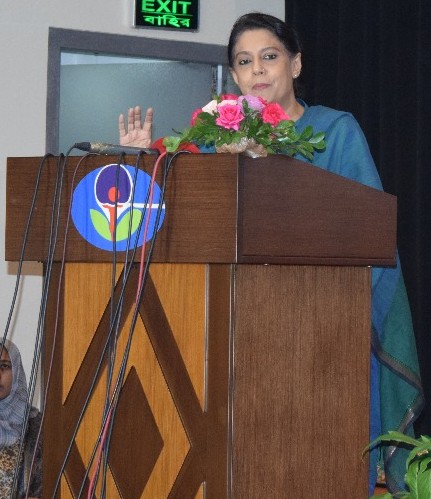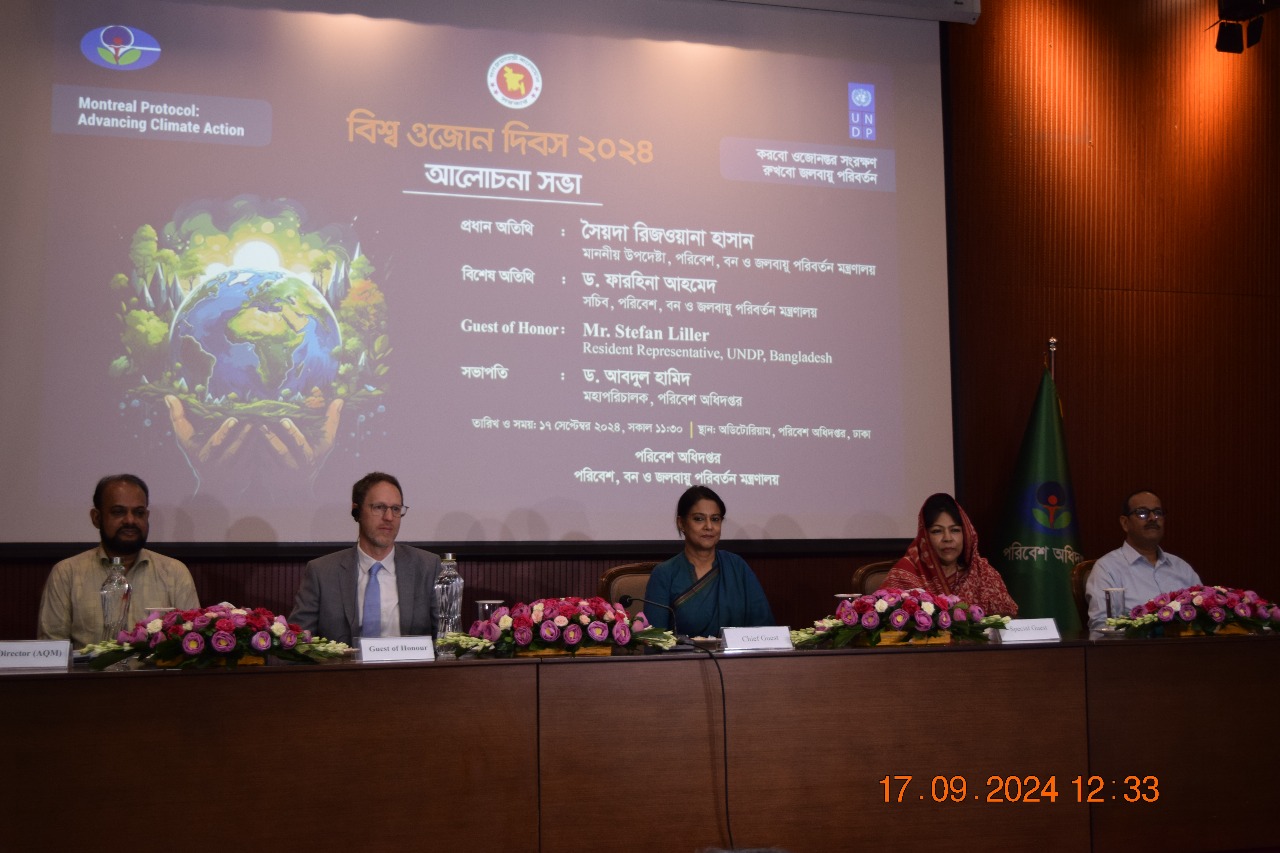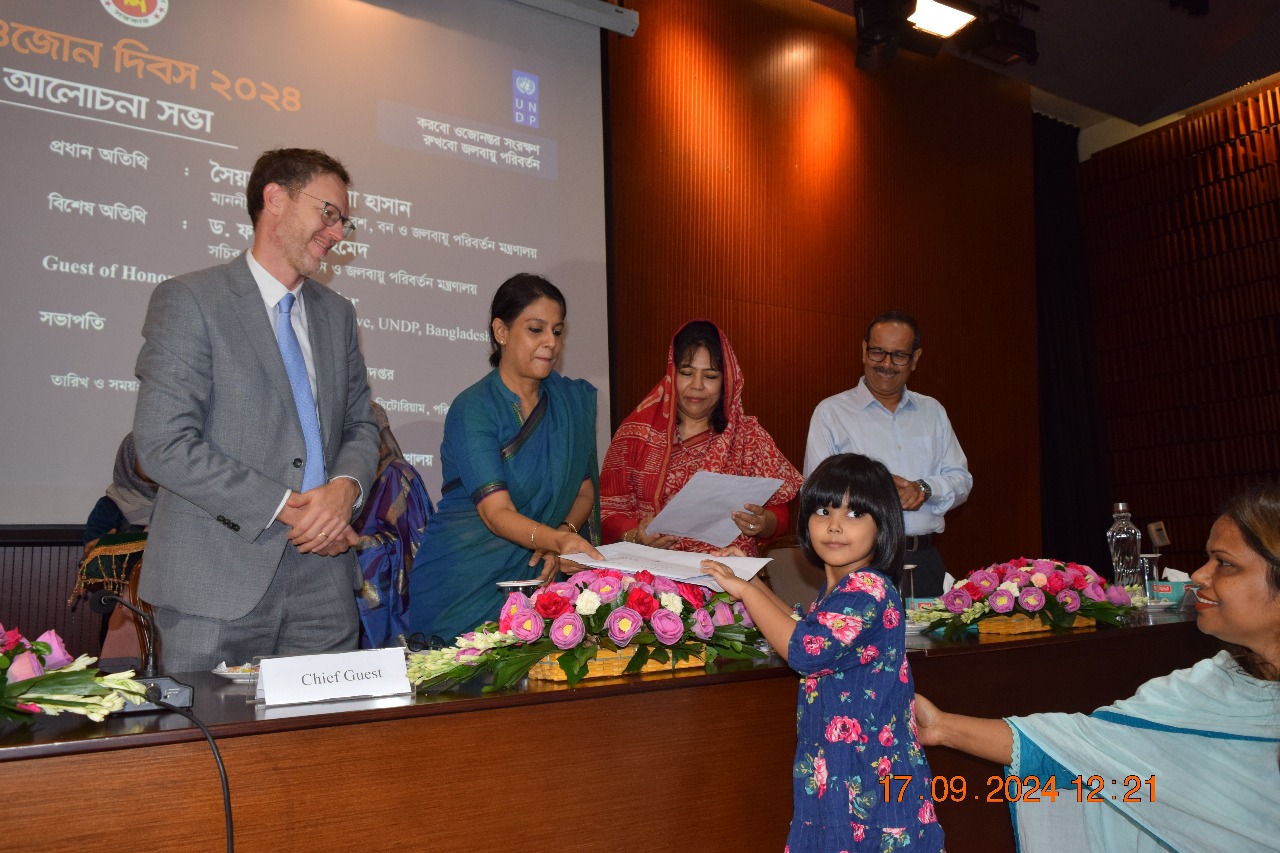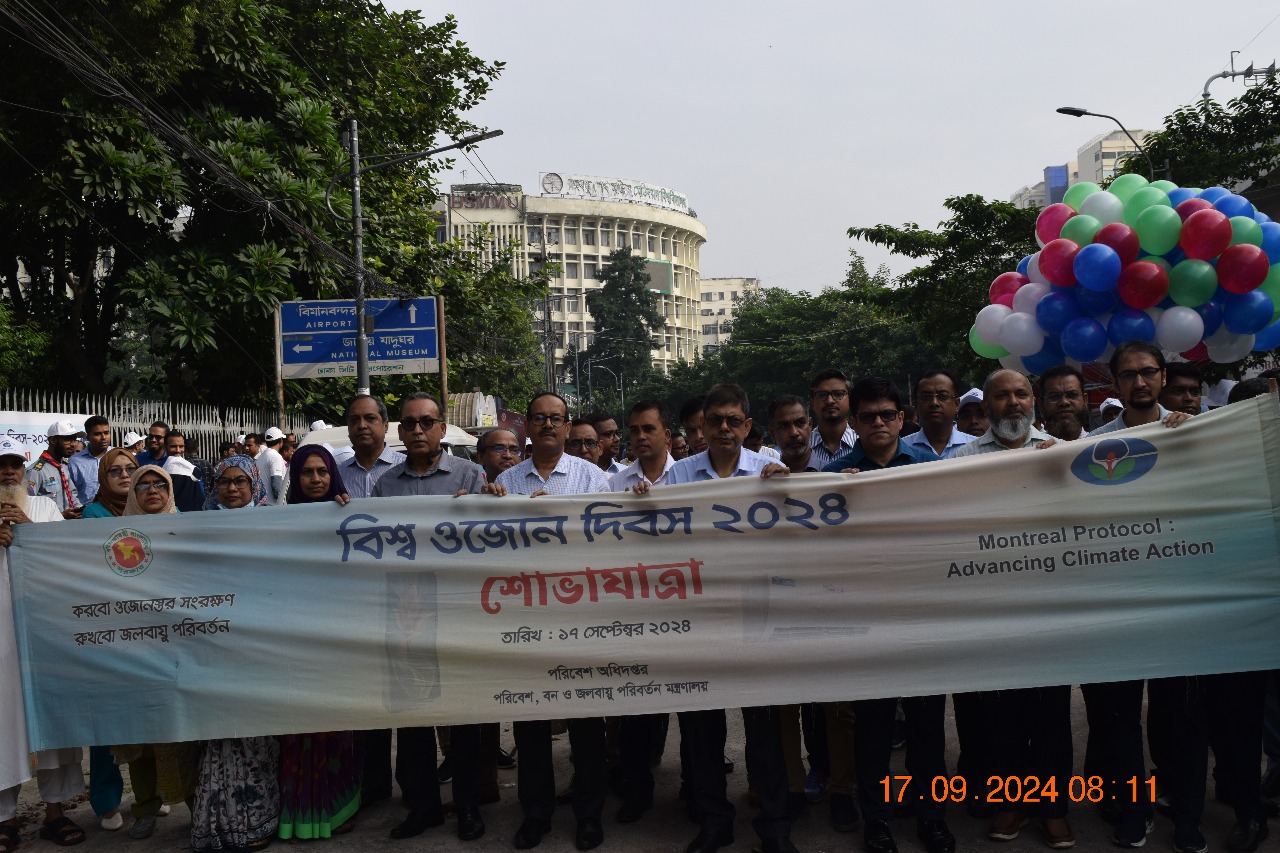Ozone Layer and Montreal Protocol
The ozone layer contributes immensely to the survival of human beings and the living world. But the ozone layer is depleting day by day due to various activities of human beings. The harmful ultraviolet rays of the sun easily penetrate the earth through the depleted ozone layer, causing serious damage to human health, flora and fauna. Excessive exposure to ultraviolet radiation can increase the risk of skin cancer, cataracts, and immunosuppression. In addition to the indirect effects of ozone depletion, the incidence of various natural disasters including climate change, floods, droughts and desertification is increasing day by day.
In 1974, Sherwood Rowland and Mario Molina published their well-known findings in the Nature that chlorofluorocarbons (CFCs) were damaging the ozone layer in the atmosphere. In 1978, the Governing Council of the United Nations Environment Program (UNEP) adopted an action plan for extensive research on the ozone layer. Then, in 1975, scientists from the British Antarctic Survey discovered the ozone hole in Antarctica. As a result, the UNEP initiated an international meeting in Vienna on March 22, 1975, to adopt a convention known as the "Vienna Convention" to protect the ozone layer. The purpose of this convention was to study, monitor ozone layer and exchange information. However, due to the lack of legal obligations of the Vienna Convention and the urgent need to protect the ozone layer the Montreal Protocol was adopted in September 1987 in Montreal, Canada. On the same day, 48 countries signed the Montreal Protocol. All member states of the United Nations have signed the protocol. With the adoption of the Montreal Protocol, the use of CFCs and halons was strictly regulated in order to stop their use. The protocol was later updated with various modifications and adjustments. This protocol was first adopted to control the production and use of six ozone depleting substances. Subsequently, the Montreal Protocol continues to make ground breaking contributions to the protection of the ozone layer by making necessary modifications and additions at various times. The production and use of about 100 ozone-depleting substances is currently being controlled under this protocol. The use and production of high-capacity ozone depleting substances has already been completely curtailed.
The latest amendment to the Montreal Protocol to protect the ozone layer is known as the Kigali Amendment. The amendment was adopted at the 26th party meeting of the Montreal Protocol held on 15 October 2016 in Kigali, the capital of Rwanda. The amendment is being hailed as a landmark step in tackling global climate change. The amendment seeks to phase out the use of 18 types of hydrofluorocarbons (HFCs) with higher global warming potential.
Almost all ozone depleting substances are identified as high-capacity greenhouse gases. The use of other major ozone depleting substances, including CFCs has been reduced to zero through the implementation of the Montreal Protocol. HFC is a man-made substance that has been introduced as an alternative to ozone depleting substances. These HFCs are commonly used in refrigeration and air conditioning systems and inhalers to treat asthma. But the hope is that HFC's alternative technology is expanding rapidly.
The Montreal Protocol has already played a significant role in tackling climate change. By implementing this protocol, it has already been possible to avoid the emission of 10 gigatonnes of carbon-di-oxide equivalent greenhouse gas into the atmosphere, which is about 5 times the first commitment period of the Kyoto Protocol. Note that the implementation of the Kigali Amendment will prevent a global warming of 0.4 degrees Celsius by the end of this century, which is expected to be largely conducive to the implementation of the Paris Agreement's promise not to raise temperatures by more than 2 degrees Celsius. If the Kigali Amendment is successfully implemented, it will be possible to reduce HFC emissions by the year 2050, equivalent to 60 billion tons of carbon dioxide. At present, alternatives to ozone depleting chemicals are being considered that will not deplete the ozone layer, reduce global warming and save energy.
Project Director
 Mr. Md. Ziaul Haque
Director Department of Environment
& Project Director
HCFC Phase-out Management Plan Stage-II UNEP Component Project
Detail
Mr. Md. Ziaul Haque
Director Department of Environment
& Project Director
HCFC Phase-out Management Plan Stage-II UNEP Component Project
Detail
Md. Mahiuddin Manik, Project Director, Renewal of Institutional Strengthening for the Phase-out of ODS (Phase-10) Project
 Md. Mahiuddin Manik,
Deputy Director (Coordination) & Project Director
Renewal of Institutional Strengthening for the Phase-out of ODS ( Phase-10) Project
Detail
Md. Mahiuddin Manik,
Deputy Director (Coordination) & Project Director
Renewal of Institutional Strengthening for the Phase-out of ODS ( Phase-10) Project
Detail
Mr. Md. Iliyas Mahmud, Deputy Director and Project Director, HCFC Phase-out Management Plan (Stage-II) UNDP Component Project
 Mr. Md. Iliyas Mahmud, Deputy Director and Project Director, HCFC Phase-out Management Plan (Stage-II) UNDP Component Project
Detail
Mr. Md. Iliyas Mahmud, Deputy Director and Project Director, HCFC Phase-out Management Plan (Stage-II) UNDP Component Project
Detail





